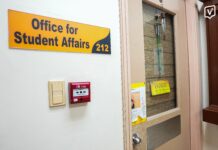Cars upon cars lining up, filling the roads and hardly moving an inch. People fill the jeepneys, buses, trains, and stations—not being able to leave on time. Either the blistering heat of the afternoon sun or the heavy downpour of a thunderstorm accompanies the travelers as they take their hour-long trips to-and-from their destinations.
This is the usual scenario in Metro Manila.
In a study done by the Metro Manila Development Authority (MMDA) in 2018, the cost of daily traffic in the National Capital Region is around 2.4 Billion pesos, and is set to reach 30 Billion pesos should the traffic problem remain unsolved.
Politicians and government agencies all promise to fix the problem, but it only gets worse.
Last September, news regarding a patient’s death inside an ambulance stuck in traffic was circulating around social media and popular news outlets. Earlier this month, Mass transportation systems like the Light Rail Transport (LRT) systems 1 and 2, along with the Metro Rail Transport (MRT) system, experienced breakdowns and maintenance issues.
On September 30, drivers around the country declared a national transport strike. Jeepney and tricycle operations ceased their operations for a day in protest of the government’s modernization program.
In response to the calls of activists and protesters, Presidential Spokesman Salvador Panelo took public transportation to work on October 11, perhaps incredulous at all the negative reports about government handling of the traffic situation. He arrived at work late after a four-hour commute, yet he still claimed that there was “no transport crisis,” but rather there was a traffic crisis.
In doing this, Panelo seems determined in not taking the problem seriously. Instead of actually putting an effort to solve the transport crisis that the filipino people are facing, he treated the traffic problem all too casually, making light of the daily travails of the ordinary Filipino commuter.
The fruitless government promises and uncoordinated public works only add to the difficulty of the people, resulting in more traffic and difficulties in traffic. What was once an easy 30-minute travel distance easily turns into an hour.
Philippine Statistic Authority’s (PSA) Economic Indicator published in December 2016 revealed that an average of 12 million Filipinos take the Light Rail Transport System Line 1, 5 million in Line 2, and an average of 10 million take the Metro Rail Transport System.
We deserve better than rusted rusty railroads, broken clogged highways and cramped spaces. Why settle for less-than-mediocre when we can ask for better?
We deserve brand new systems for transportation—organized and systematic.
Point-to-point stops should be the norm, and scheduled departures and arrivals should be followed by the mass transportation system.
Brand new machineries and engines, which should have been provided by the government, are long overdue.
However, there should be discipline not just in the government, but in the civilians as well.
The 2019 semi-annual report made by the Land Transportation Office (LTO) also revealed that 6.7 million vehicles are registered in the country, with an 8.68% increase in registrations from 2018 to 2019.
Considering the number of vehicles travelling the Philippine roads, traffic rules should be revamped and implemented more strictly, perhaps imposing of higher or stricter penalties for non-abiding citizens should be implemented.
We have to enforce what we, as a nation, will benefit from. Otherwise, we will not receive the proper services due to us.
Maybe it’s time to demand to get what we, as a nation are deprived of.















